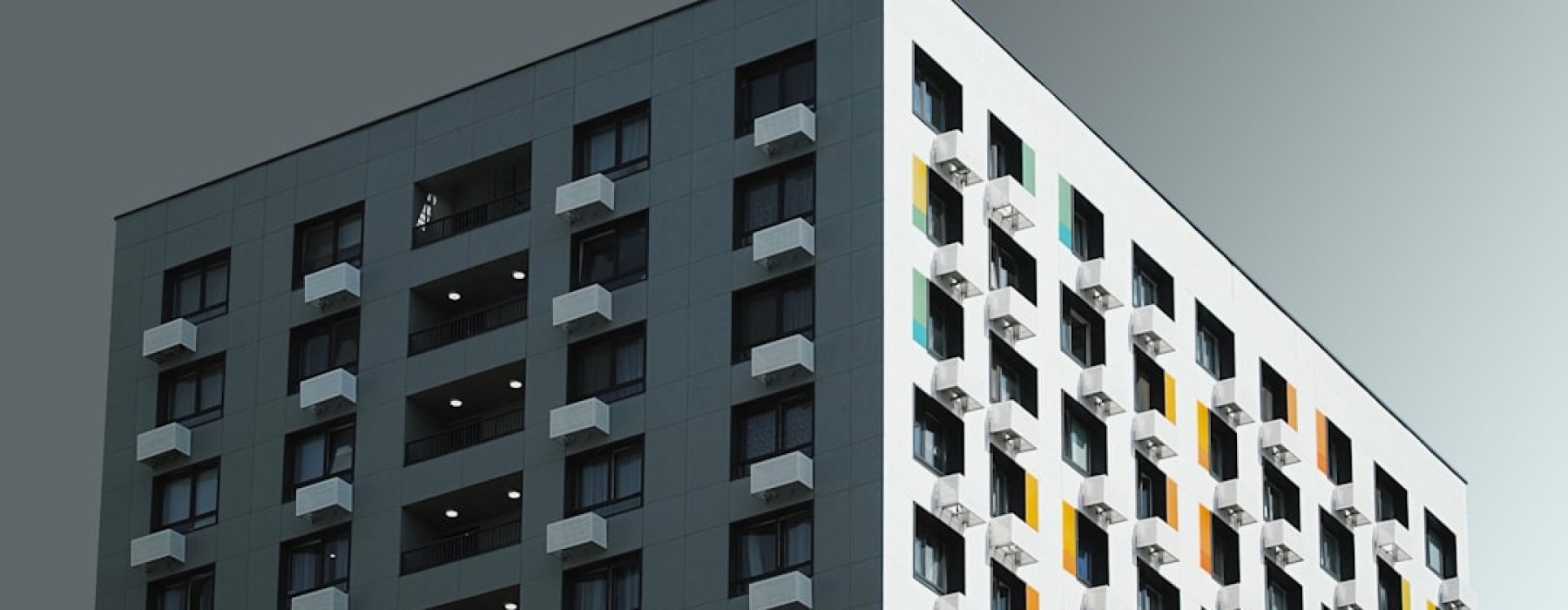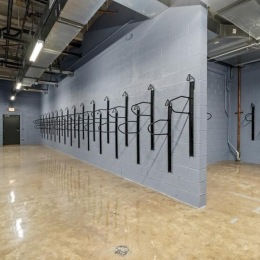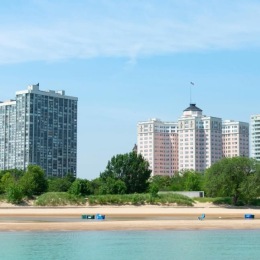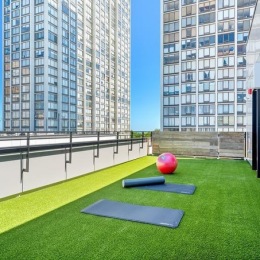Why Elevator Access Transforms Modern Living
Apartments with elevator access offer convenience, accessibility, and comfort that walk-up buildings simply can't match. With over 12,900 elevator-equipped apartments available in Dallas County alone and 790 in Cary, North Carolina, these buildings have become the standard for modern urban living.
Key benefits of elevator access apartments:
- Convenience - No carrying groceries up multiple flights of stairs
- Accessibility - Essential for residents with mobility needs or temporary injuries
- Moving ease - Simplified furniture delivery and relocation
- High-floor living - Access to better views and reduced street noise
- Weather protection - Covered transport between floors
- Universal design - Accommodates strollers, wheelchairs, and heavy items
The research shows that elevator buildings often feature improved security systems, with some offering direct elevator access to individual units through key fob controls or destination dispatch systems. These buildings must also meet strict safety codes, including backup power systems and emergency communication features.
Whether you're looking at luxury high-rises or mid-rise communities, elevator access has evolved from a luxury amenity to an expected feature that significantly improves daily life for residents of all ages and abilities.
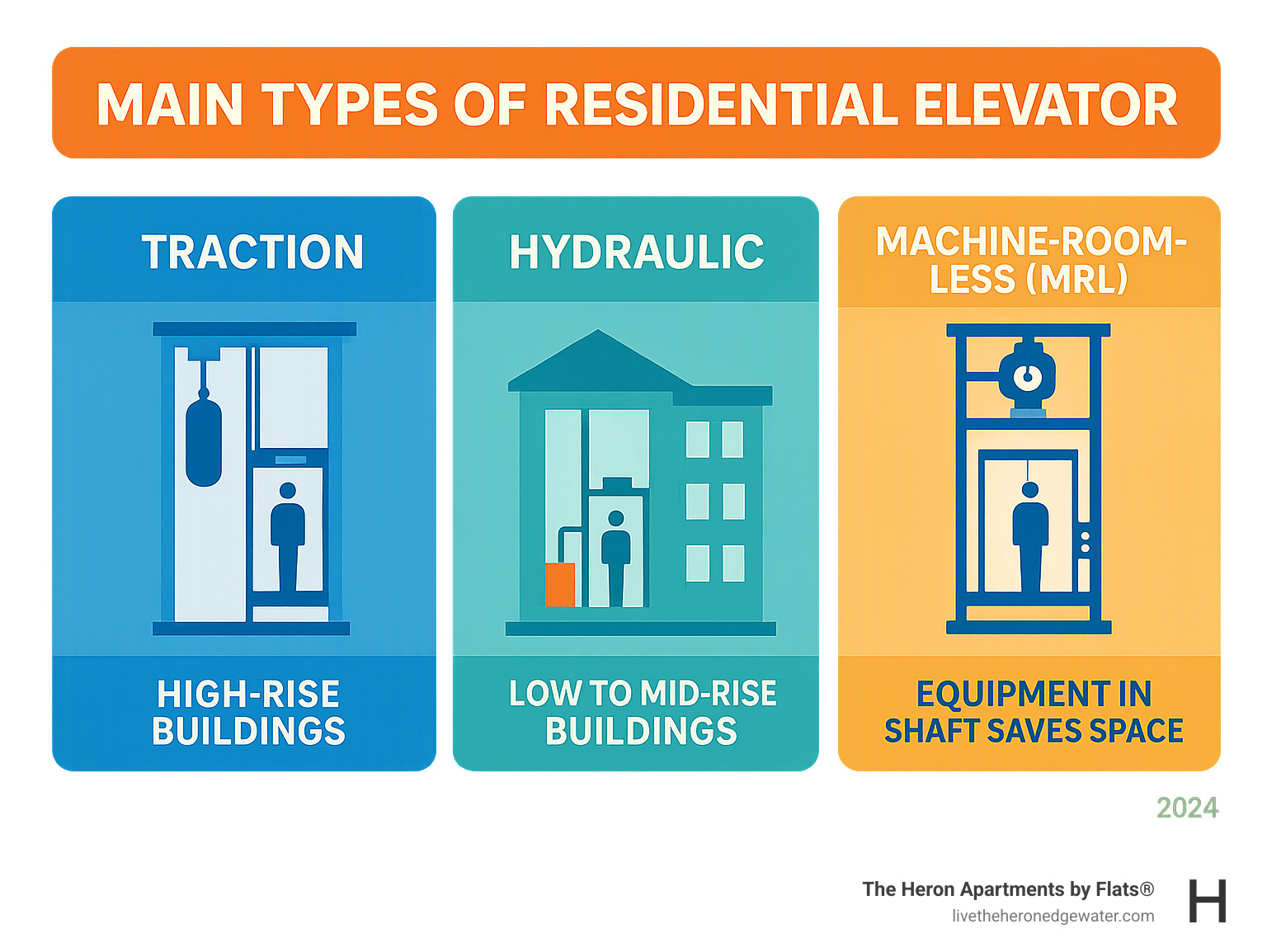
The Unseen Benefits of Elevator Living
Living in apartments with elevator access transforms your daily experience in ways that might surprise you. It's not just about skipping the stairs – it's about fundamentally changing how you interact with your home and building.
Picture this: you've just returned from a grocery shopping marathon, arms full of bags that somehow multiplied in the parking lot. In a walk-up building, this means strategically balancing everything while climbing multiple flights, likely making several exhausting trips. With elevator access, you simply glide smoothly from lobby to your floor, bags intact and energy preserved for more important things – like actually putting those groceries away.
This everyday convenience extends far beyond groceries. That new couch you've been eyeing? The oversized mirror that caught your eye at the weekend market? Moving large items becomes manageable rather than a logistical nightmare. Delivery drivers appreciate it too, which often means better service and fewer "sorry we missed you" notes.
Accessibility for all residents is perhaps the most meaningful benefit. For anyone using a wheelchair, walking with a cane, recovering from surgery, or navigating with a stroller, elevators aren't just convenient – they're essential. They ensure everyone can move freely throughout their building, accessing all areas without barriers or assistance.
Elevator access also open ups the magic of high-rise views. There's something special about watching the city wake up from your window, or seeing sunset paint the skyline in brilliant colors. These liftd perspectives come with the bonus of reduced street noise and a sense of peaceful separation from the hustle below.
For those exploring Modern Apartments Chicago has to offer, elevator access represents a commitment to resident comfort and thoughtful design. It simplified daily routines in countless small ways – from carrying laundry baskets to welcoming guests who don't arrive breathless from climbing stairs.
The result? A living experience that feels effortless and refined, where the building works with you rather than against you in your daily life.
Understanding Different Types of Elevator Access
When we talk about apartments with elevator access, it's important to understand that not all elevator systems are created equal. There are various types of access that can significantly impact your experience, from the communal to the highly private.
Most commonly, you'll find community elevators. These are shared elevators that serve all residents and guests. They stop at every floor or designated common floors. They provide general access throughout the building, from the lobby to individual residential floors, and often to amenities like fitness centers or rooftop lounges.
A step up in privacy and exclusivity is semi-private access. In this setup, an elevator might serve only two units per floor. Or, it could open into a small, shared vestibule that then leads to individual apartment doors. This offers a bit more seclusion than a fully communal elevator while still sharing some infrastructure.
For improved security and convenience, many modern apartments with elevator access use key fob systems. With these systems, residents get a unique key fob that grants them access to their specific floor. The elevator will only open on the floor corresponding to the activated fob. This prevents unauthorized individuals from accessing residential levels. This technology adds a layer of controlled access, ensuring that only those with proper authorization can reach certain areas.
Even more advanced are destination dispatch elevators. Instead of pressing a floor button inside the elevator, you input your desired floor on a keypad in the lobby. The system then directs you to a specific elevator car that will take you to your destination most efficiently. It often groups passengers going to similar floors. While this primarily makes traffic flow smoother, it also inherently adds a layer of security as the system controls access.
Finally, the pinnacle of private living is when the elevator opens directly into the unit. This is often called 'private elevator access' or 'private keyed elevator access.' In these luxury units, the elevator car itself becomes an extension of your apartment's private foyer. This offers unparalleled privacy and exclusivity. This type of system is almost always integrated with sophisticated security measures. These measures ensure only the resident can access their unit directly. This seamless transition from outside to inside truly lifts the living experience.
Understanding these distinctions allows you to appreciate the various levels of convenience, privacy, and security that different apartments with elevator access can offer. We strive to provide our residents with the highest levels of convenience and safety, which is why features like these are so important. Our Gallery showcases the thoughtful design and functionality we prioritize.
Security in Apartments with Direct Elevator Access
The idea of an elevator opening directly into your apartment unit often sparks questions about security. Is it truly secure? We understand this concern, and we want to reassure you that apartments with elevator access that open directly into units are designed with robust security features to ensure your peace of mind.
Our research, including discussions from online forums, highlights that initial skepticism about the security of these systems is common. Some residents might wonder if a "key on the elevator panel" could be easily bypassed, or if the absence of a doorman makes security worse. However, modern buildings using direct elevator access use sophisticated technologies that go far beyond a simple key.
At the heart of security for these units are private foyers. When the elevator opens, it brings you into a dedicated, locked-off space that is exclusively part of your apartment. This isn't a common hallway; it's an extension of your private living area. This ensures that no one can step out of the elevator directly into your main living space without permission.
Access control technology is paramount. Instead of a simple key, these systems typically use encrypted key fobs. These are highly secure and unique to each resident. Some luxury buildings even use biometric scanners (like fingerprint or facial recognition) for an even higher level of authentication. These fobs or biometric scans are programmed to only allow access to the specific floor or unit the resident is authorized for. This means if someone unauthorized gets into the building's lobby, they cannot simply ride the elevator to your floor. The system will not recognize their credentials for your floor. This effectively restricts access only to the resident of that floor.
Furthermore, comprehensive surveillance systems are standard. High-definition cameras monitor elevator cabs, lobbies, and all common areas. This provides a constant record and discourages unauthorized activity. This visual oversight adds another layer of protection.
Effective visitor management protocols are also in place. For guests, residents typically use an intercom system to grant temporary access. Visitors are often required to be announced and buzzed in. Some systems even allow residents to grant temporary, single-use elevator access to their guests from their smartphone or an in-unit panel. This ensures that every person who arrives at your private foyer has been explicitly permitted by you.
These combined measures—private foyers, advanced access control technology, surveillance, and stringent visitor management—provide significantly improved privacy and a high level of security. They are designed to prevent unauthorized access, making apartments with elevator access that open directly into units among the most secure residential options available.
Building Codes and Safety Regulations
When considering apartments with elevator access, it's crucial to understand the stringent building codes and safety regulations that govern their design, construction, and operation. These regulations are in place to ensure the safety of all residents and to provide reliable functionality, especially during emergencies.
One of the most important aspects is egress requirements. While elevators are incredibly convenient, they are generally not considered primary means of escape during emergencies like fires. Therefore, all multi-story buildings, including those with apartments with elevator access, are required by fire and building codes to have accessible stairwells. These stairwells serve as alternative exits. They provide a safe evacuation path if the elevators are out of service or deemed unsafe. This means you will always have a clear path to safety, even if the elevator isn't working.
Fire service access is another critical component. Elevators in residential buildings are designed with special features to assist firefighters. This often includes a "firefighter's recall" system. This system brings elevators to a designated floor for emergency personnel use, bypassing regular controls. Additionally, emergency communication systems, such as two-way intercoms inside elevator cabs, are required. These allow trapped occupants to communicate with building management or emergency services.
Regular inspections are not just a suggestion; they are a legal requirement. Elevators must undergo routine maintenance checks and periodic inspections by certified professionals. This ensures they are operating safely and efficiently. These inspections verify compliance with local, state, and national safety standards. Look for inspection certificates displayed inside the elevator cab.
It's also important to understand the distinction between different accessibility laws. Our research highlights that residential properties primarily fall under the Fair Housing Amendments (FHA). The FHA mandates accessible routes and features for residential units, as detailed in the Fair Housing Act accessibility guidelines. This ensures that buildings are designed to be usable by individuals with disabilities. This includes accessible entrances and common areas, and a certain percentage of accessible units. For example, if the first floor containing dwelling units is above ground, the FHA often considers this the "ground floor" for accessibility purposes. It requires an accessible route to all units on that level. While an elevator is often the most practical solution for multi-story residential buildings to meet these requirements, the core mandate is an accessible route.
Finally, backup power systems are a standard safety feature in modern elevator buildings. In the event of a power outage, generators or battery backup systems ensure that elevators can continue to operate. This allows for a controlled descent to the nearest floor, or they remain functional for emergency personnel. This prevents residents from being stranded during a power disruption. These comprehensive codes and regulations ensure that your experience in apartments with elevator access is not only convenient but also incredibly safe.
Key Considerations for Your Search for Apartments with Elevator Access
When you're searching for your ideal home, especially among apartments with elevator access, it's exciting to imagine the ease and convenience they offer. However, there's more to consider than just the presence of an elevator. To truly ensure the smooth and safe experience you're looking for, it's wise to look a little deeper.
Think of it this way: a reliable elevator is a happy elevator! A key factor in this happiness is understanding the building's maintenance contracts. Reputable apartment communities will have partnerships with professional elevator service companies. These companies perform regular preventative maintenance, keeping everything running smoothly. They're also on call for any unexpected issues. Knowing how often maintenance is performed and who provides the service can give you great peace of mind.
Even with the best maintenance, sometimes unexpected things happen. That's why it's important to understand the emergency procedures for elevator malfunctions. While getting stuck is rare, a well-prepared building will have clear steps for residents to follow. This includes knowing how to communicate for help and what response time to expect. This also ties into strong building staff support – knowing there are trained people available to assist quickly during an emergency is incredibly reassuring.
Safety first! While elevators are wonderful, alternative exits (stairwells) are your true heroes in a major emergency, like a fire. Take a moment to familiarize yourself with their locations. Make sure they are always well-lit and free of obstructions. They are designed to be your clear path to safety.
Lastly, especially in larger communities, you might find a service elevator. These are often larger and tougher, perfect for handling big tasks like moving furniture, large deliveries, or maintenance equipment. Knowing if your building has one, and how it can be used by residents (for example, when moving in or out), can be a huge convenience. It helps keep the main passenger elevators clear and pleasant for everyday use.
By exploring these details, you'll ensure your experience in apartments with elevator access is not just convenient, but also secure and completely hassle-free.
What to Ask About Apartments with Elevator Access
When you're touring potential apartments with elevator access, asking the right questions can give you a much clearer picture of what daily life will be like. Don't be shy – property management is there to help!
Here are some helpful questions to ask:
- What is the regular maintenance schedule for the elevators? This question helps you understand how proactively the building manages its elevator systems. Do they get checked monthly, quarterly, or annually?
- What is the emergency response plan if an elevator malfunctions or someone gets trapped? It's always good to know the procedure. Who do residents contact? What's the typical response time for help to arrive?
- Is there after-hours support available for elevator issues? Elevator problems don't always stick to business hours. Knowing that assistance is available 24/7 is a big plus.
- What are the pet policies related to elevators? If you have furry friends, clarify any rules about leashes, carriers, or specific times pets are allowed in elevators. This helps ensure a harmonious environment for everyone. We pride ourselves on being a pet-friendly community, and clear guidelines benefit all residents.
- Are there specific procedures or reservations required for using the elevator on moving day? Moving large items, especially into an apartment with elevator access, often means coordinating with building management to reserve an elevator or use a service elevator. Understanding this process upfront can save you a lot of stress.
Asking these targeted questions will not only show you're a thoughtful prospective resident but will also provide you with valuable insights into the building's operations and its dedication to resident safety and convenience.
What to Do in an Elevator Emergency
While elevators are incredibly safe, being prepared for a rare emergency can alleviate anxiety. If you ever find yourself trapped in an elevator in apartments with elevator access, remember these crucial steps:
- Stay calm. This is the most important step. Panic can cloud your judgment. Modern elevators are designed with multiple safety features, and being stuck is usually a temporary inconvenience, not a life-threatening situation. There's plenty of air, and the car isn't going to fall.
- Use the emergency phone. Most elevators are equipped with an emergency phone or an intercom button that connects directly to building management, a security desk, or an emergency service provider. Speak clearly and state your location (building name, floor number if known, and that you are in the elevator).
- Press the alarm button. This button is typically marked with a bell icon. It will sound an audible alarm outside the elevator, alerting anyone nearby to the situation.
- Wait for assistance. Once you've made contact or sounded the alarm, the best course of action is to wait patiently for help to arrive. Building staff or emergency services are trained to handle these situations.
- Do not attempt to open doors. Never try to pry open the elevator doors or force your way out. This is extremely dangerous and could lead to serious injury. Leave this to the trained professionals.
Knowing these steps can empower you to handle an unexpected situation with confidence and ensure your safety until help arrives.
Frequently Asked Questions
How secure are apartments where the elevator opens directly into the unit?
When people first hear about apartments with elevator access that open directly into your home, security questions naturally come to mind. It's completely understandable to wonder how safe this setup really is.
The good news is that these systems are actually incredibly secure, often more so than traditional hallway arrangements. Modern buildings use encrypted key fobs that are uniquely programmed for each resident's specific floor - no simple keys that could be copied or lost. Some luxury buildings even incorporate biometric scanners like fingerprint or facial recognition technology for an extra layer of protection.
Here's what makes these systems so secure: when the elevator opens, you step into a dedicated private foyer that belongs exclusively to your unit, not into a shared hallway. This space is completely locked off from other residents and visitors. The system restricts access only to the resident of that floor, so even if someone unauthorized somehow entered the building, they couldn't access your floor without your specific credentials.
These buildings also integrate advanced surveillance and visitor management systems throughout common areas and elevator cabs, creating multiple layers of security that work together to keep you safe and give you peace of mind.
Are buildings with elevators also required to have stairs?
Yes, absolutely! This is actually a really important safety requirement that many people don't think about when looking at apartments with elevator access.
All multi-story buildings are required by fire and building codes to have accessible stairwells as alternative means of egress. While elevators are wonderful for daily convenience and accessibility, they're not considered the primary way to exit during emergencies like fires or power outages.
Think of stairwells as your safety net. In any emergency situation, these well-lit, clearly marked stairs provide a reliable path to safety that doesn't depend on electricity or mechanical systems. Building codes are very strict about this - every residential floor must have clear access to these emergency exits.
So when you're touring apartments with elevator access, you can feel confident knowing that multiple safe exit routes are always available, no matter what situation might arise.
How does an elevator improve access to building amenities?
This is where apartments with elevator access really shine in terms of lifestyle improvement! Elevators transform how you experience your entire building, not just your individual unit.
Think about it: whether you want to hit the fitness center in the basement, use a quiet business lounge on a mid-level floor, or enjoy cocktails at a stunning rooftop lounge, elevators provide simple, quick access to facilities on any floor. No more skipping the gym because you don't want to trek down multiple flights of stairs, or avoiding rooftop gatherings because the climb back up feels daunting.
This seamless vertical transportation makes all community features available to every resident, regardless of mobility or energy levels on any given day. Whether you're carrying yoga mats to a fitness class, bringing snacks to a rooftop party, or just want to explore different areas of your building, elevators remove all the barriers.
The result is that you actually use and enjoy more of what your building offers, fully experiencing community living and making the most of the amenities designed to improve your daily life.
Find Your Ideal Elevator-Access Home
Apartments with elevator access represent the pinnacle of modern living, seamlessly blending everyday convenience with sophisticated comfort. As you've finded throughout this guide, these homes offer far more than just a ride between floors – they provide genuine accessibility, improved security, and a lifestyle that truly lifts your daily experience.
The journey to finding your perfect elevator-equipped home becomes much simpler when you understand what to look for. Whether you're drawn to the convenience of community elevators, the improved privacy of key fob systems, or the ultimate luxury of direct unit access, each type offers its own unique benefits. The key is matching these features with your personal needs and preferences.
Modern communities recognize that elevator access isn't just an amenity – it's an essential component of thoughtful, inclusive design. Buildings that prioritize these features often showcase their commitment to resident comfort through comprehensive maintenance programs, robust security systems, and emergency preparedness protocols that give you true peace of mind.
When you're ready to explore apartments with elevator access that embody these principles, communities like The Heron Edgewater stand out as prime examples of how these features can be seamlessly integrated into luxury apartment living. Our community was designed with these premium amenities at the forefront, ensuring that every aspect of your home supports an effortless, comfortable lifestyle.
The beauty of elevator living lies in its ability to make your home truly accessible to everyone – from young professionals juggling busy schedules to families managing daily routines, and anyone who values the convenience of seamless vertical transportation. It's about creating a living environment where your home works for you, not the other way around.
Ready to find how elevator access can transform your living experience? Explore available floor plans at The Heron Edgewater and see how these thoughtful design elements come together to create homes that truly lift your lifestyle.
